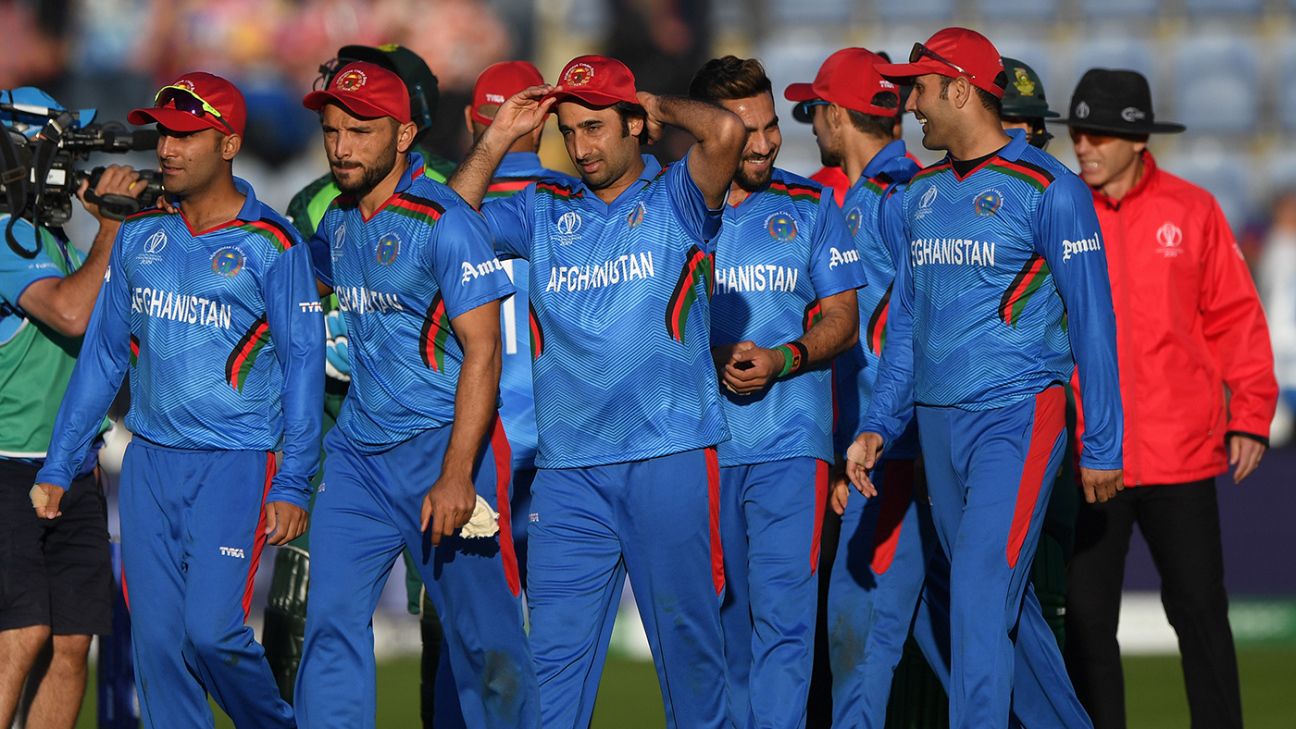Don’t do this, Afghanistan. There is another way.
There are alternatives to letting chaos overwhelm you. There are brighter timelines, waiting to be seized, in which dysfunction does not define your World Cup. Your opponents, South Africa, might be battling demons from their past. Elsewhere, the likes of Sri Lanka are groaning under the weight of their galactic-scale ineptitude – their manager having recently complained to the ICC about pitches, the team bus, hotels, training facilities, and probably about the photo on his official accreditaiton making him look chubby when all the other managers look sharp and handsome. But there is no reason to follow these established sides down the moronic paths they have picked out for themselves. You can be better. You should at least try.
In this World Cup so far, though, perhaps you have been the most defective outfit, saved only from more intensive media scrutiny by low expectations. Twice in two matches now, oppositions have shellacked Afghanistan with the ball, then punched the lights out with the bat. A trend has developed – a hopeful opening stand ended by a shot of breathtaking daftness, followed by a middle order that falls over like rows of library shelves crashing into each other, before the lower order looks as if it is rolling up its sleeves and readying itself for a fight, before promptly turning heel and fleeing the moment they see the size of the other guy.
WATCH on Hotstar (India only) – Full highlights
But there can be a universe in which Hazratullah Zazai does not spot a bouncer from the uber-quick Kagiso Rabada, and hole out attempting to clear the one deep fielder on the leg side, at deep square leg. The success percentage of that shot is so poor, it is possibly lower than the number of teams the ICC is planning to admit to their next World Cup. There can be a future match, in which wickets three, four, five, six and seven don’t fall in the space of eight runs, multiple batsmen basically tripping over each other in their race back to the pavilion. Only Rashid Khan, with his 35 off 25, gave the innings some semblance of professionalism.
Then there is the selection. Maybe folks who make these decisions feel that normal rules don’t apply to Afghanistan. It’s not hard to see why they might. This team has risen to compete at a 10-team World Cup when 20 years ago, there was really no such thing as Afghan cricket. This is plainly astonishing. That Afghanistan are the only nation at the tournament not to have either borne or applied the yoke of the British empire also makes them exceptional.
But not so exceptional, that, you know, basic logic does not apply. You inexplicably drop your tournament top-scorer – a batsman who hit Afghanistan’s only half-century against Australia, and made the team’s best score in another game – and you should expect to weaken your top order. Najibullah Zadran‘s replacement in this match was Asghar Afghan, the jilted captain (its own little controversy). Instead of a batsman who has twice given substance to Afghanistan’s innings this tournament, you had one who hit his fifth ball back to bowler Imran Tahir.
Captain Gulbadin Naib’s justification was that Asghar was the senior player, and that he commanded a place in the top order the moment he became fit again. Okay, but Afghanistan had failed to make 200 in two matches on the trot. When you have a buffet of misfiring batsmen to choose from, why drop the guy in form? What next from the shooting-yourself-in-the-foot playbook? Batsmen have to hold the bat with their teeth? Bowlers have to do “the worm” to the bowling crease instead of running up? Fielders have to fill their pants with rocks to weigh themselves down?
These are not serious suggestions, by the way, Afghanistan. You don’t have to do any of this.
On the field, Afghanistan engaged in yet more shambolism. Asghar failed to account for the spin on a ball coming to him at third man, toppled over like grain silo when he tried to correct his course, and ended up not getting a hand on the ball, which dribbled mockingly past him to the boundary. Rahmat Shah misjudged the trajectory of a ball at midwicket, ran in for a catch that he might not have made with five-metre long hands, and ended up letting the ball skid over the rope. There were more misfields, overthrows, on-field gesticulating, and a general air of despair over the performance.
After four matches, Afghanistan are now the only team without a victory. Some of this was expected, but their meekness over the last two games was not. In addition to the losses, there has also been a controversy over Mohammad Shahzad’s exit from the World Cup, and rumours that administrative interference is contributing to all this on-field bungling. Their campaign is teetering, but it doesn’t have to be this way. They don’t have to fall spectacularly to pieces on cricket’s biggest stage, like Sri Lanka in 1999, or India and Pakistan in 2007, or England in 2015, 2007, 2003, 1999 and so on.
The established cricket world tends toward farce. The bigger nations are either sacking coaches with every new moon, having their boards strung up in the courts for serious breaches, alienating vast swathes of their own populations by embracing elitism, facing serious credibility problems in the aftermath of cheating scandals, or fighting constantly with their own players. Afghanistan don’t have to follow suit. But right now it seems like they are.
